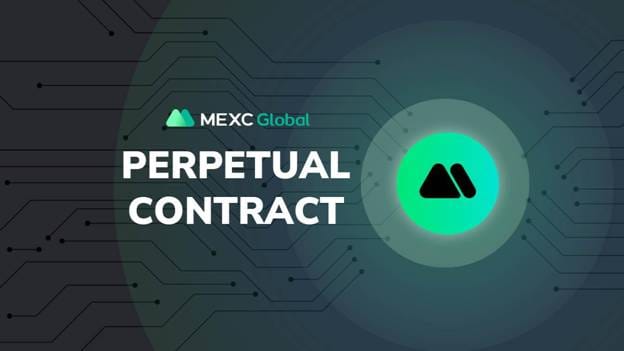In the world of cryptocurrency trading, perpetual futures contracts—commonly called “perps”—have quietly become the backbone of market activity. While spot trading may grab the headlines, it’s perpetual contracts that drive the majority of the volume, shaping how traders engage with digital assets. These contracts offer traders the ability to maintain leveraged positions indefinitely, providing flexibility, liquidity, and strategic opportunities that traditional financial products often can’t match.
But what exactly makes perpetual contracts so essential for traders? And what risks come with the rewards? Below is a comprehensive look into why perpetual futures are considered a game changer in crypto markets today.
Understanding Perpetual Contracts: How They Work
Traditional futures contracts come with an expiration date. Once that date arrives, traders must settle the contract—either by delivering the asset or paying/receiving a cash equivalent. Perpetual futures contracts eliminate this restriction. They allow traders to keep positions open for as long as they maintain the required margin.
Key Feature: The Funding Rate
The mechanism that makes perpetual contracts possible is called the funding rate. This is a small fee exchanged between long and short positions at regular intervals—typically every eight hours.
If the perp contract price is higher than the spot price, longs pay shorts. If the perp price is lower than spot, shorts pay longs. This self-adjusting system keeps perp prices tethered to the underlying spot market, preventing large and sustained price gaps.
High Leverage
Perpetual contracts allow traders to amplify positions significantly, often with leverage ranging from 10x to 100x depending on the platform. Popular platforms like Binance, Bybit, and MEXC offer access to a wide range of perpetual contracts with varying leverage options—with MEXC offering up to 500x leverage on select pairs, including trending assets such as Pi network price, making it one of the most aggressive retail trading platforms available.

Why Traders Love Perpetual Contracts
The dominance of perpetual futures in crypto trading isn’t accidental. Several unique advantages explain their popularity:
No Expiry Date Means Long-Term Positions
For traders who want to maintain exposure to an asset without worrying about rolling over contracts, perps are ideal. Whether hedging long-term holdings or riding out multi-month trends, traders can set positions and leave them open indefinitely.
Continuous 24/7 Trading
Unlike stock or commodity futures tied to regular market hours, crypto perpetuals trade 24/7. Markets don’t sleep, and neither do crypto exchanges. This aligns with the global, decentralized nature of cryptocurrency and appeals to traders across time zones.
Accessibility for Retail and Institutional Traders Alike
Historically, futures trading was limited to institutional players due to capital requirements and regulatory barriers. Crypto perpetuals have democratized access. Retail traders can open accounts with relatively small deposits and immediately start trading with leverage.
Enhanced Liquidity and Market Depth
According to research from Cornell Business, perpetual futures now account for over 90% of all crypto derivatives trading volume. This high level of participation creates deep order books and better liquidity, making it easier for traders to enter and exit positions without significant slippage.
Short-Selling Made Simple
One of the standout features of perpetual contracts is the ease of short-selling. Traders don’t need to borrow assets or deal with the complexities seen in traditional finance. They can open a short position as easily as going long, allowing for hedging and speculative strategies on falling prices.
Market Impact: How Perps Shape Crypto Trading
The rise of perpetual contracts hasn’t just changed how individual traders operate; it’s reshaped the entire crypto market structure. Several key shifts have occurred:
Increased Trading Activity
By offering leverage and round-the-clock access, perps have significantly increased overall trading volume in crypto markets. This, in turn, enhances price discovery and draws more participants, including algorithmic and high-frequency trading firms.
Higher Trading Costs
While increased liquidity is a plus, there’s a trade-off. Funding fees, exchange commissions, and spread costs add up—especially in volatile markets where funding rates can swing dramatically. Traders must factor these costs into their strategies to remain profitable.
More Informed Trading
Perps facilitate informed trading because they enable both long and short positions with high liquidity. Skilled traders can capitalize on inefficiencies and imbalances more easily, improving overall market efficiency. Research suggests that markets with active perp trading tend to exhibit more accurate and responsive pricing.
The Risks of Perpetual Futures Trading
Despite their advantages, perpetual contracts come with serious risks. These risks are not always obvious to beginners, which is why responsible trading education is essential.

Liquidation Risk
The high leverage offered in perp trading magnifies both profits and losses. If a trader’s position moves too far against them, their margin balance can fall below maintenance requirements, triggering automatic liquidation. On some platforms, liquidations happen frequently due to aggressive leverage usage.
Counterparty and Platform Risk
Many perpetual contracts are traded on offshore exchanges that may not be regulated by major financial authorities like the Commodity Futures Trading Commission (CFTC). This creates counterparty risk: if an exchange fails or is hacked, traders could lose their funds.
Funding Fee Volatility
During extreme market conditions, funding rates can spike. For example, during Bitcoin’s major rallies or crashes, funding rates have surged above 1% per funding interval. For leveraged traders, these costs can quickly erode profits or deepen losses.
Complex Strategies Required
Unlike spot trading, perpetual futures require a deeper understanding of market mechanics. Traders must monitor margin levels, funding rates, and liquidation prices closely. Neglecting any of these factors can lead to costly mistakes.
Real-World Examples: Perpetual Contracts in Action
To illustrate their importance, consider two real-world examples:
- Bitcoin Perps During Bull Markets: In 2021, perpetual futures were instrumental in driving Bitcoin’s price surges. Leveraged longs piled into BTCUSDT perps, creating upward momentum fueled by liquidity and optimism. Funding rates often turned positive, showing longs were dominant.
- Market Corrections and Liquidation Cascades: Conversely, when prices turn sharply downward, leveraged positions get liquidated en masse. These liquidation cascades can exacerbate price moves, as seen during several sharp corrections in 2022 and 2023.
Both cases highlight how integral perps have become to crypto price action—not just as a reflection of sentiment but as a driver of volatility itself.
Final Takeaways: Why Perpetual Contracts Are a Game Changer
Perpetual contracts have transformed cryptocurrency trading from a niche activity into a global, liquid, and sophisticated market. Their unique structure—no expiry, continuous trading, high leverage—offers tools once reserved for professional traders to a broader audience.
However, with great power comes great responsibility. The very features that make perps attractive also introduce risks that can wipe out traders who are not adequately prepared. Funding rates, liquidation risks, and regulatory uncertainties all require careful management.
For traders who take the time to understand how perpetual futures work, manage their risk properly, and stay informed, perps represent an unparalleled opportunity. They provide the flexibility to profit from both rising and falling markets, hedge long-term holdings, and participate in one of the fastest-moving financial sectors in the world.
In short: perpetual contracts aren’t just another crypto product—they are the engine driving modern crypto markets forward.





